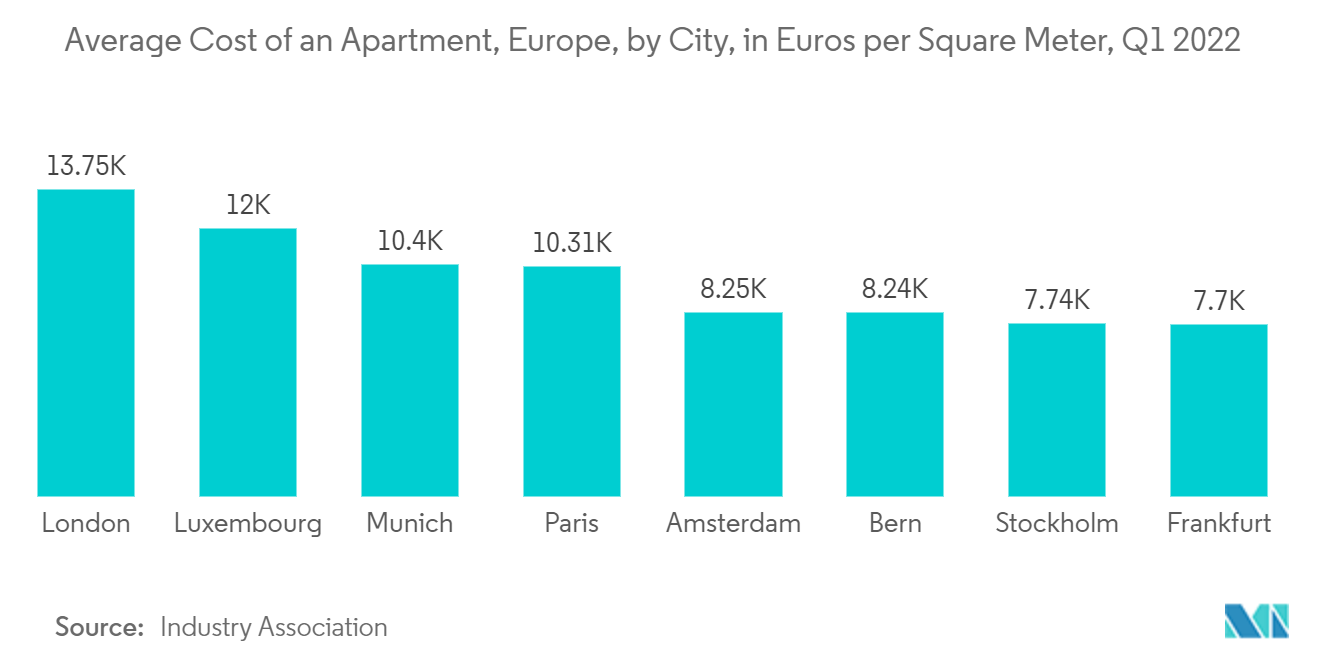Market Trends of Europe Condominiums and Apartments Industry
This section covers the major market trends shaping the Europe Condominiums & Apartments Market according to our research experts:
Demand for Affordable Housing
- The cost of living, combined with inflation, has significantly impacted citizens throughout Europe. It is also clear that there is no single solution to the problem. Each European country has taken a different approach to addressing the issue and providing people with safe and livable housing. Affordable housing is provided to Belgians with low incomes, whether individuals or families. The system is mostly concentrated in the Brussels, Flemish, and Walloon regions, which have large communities and job opportunities. Affordability accounts for approximately 6.5% of the housing market or 280,000 units. Instead of increasing supply, the country is focusing on renovating existing structures.
- The United Kingdom struggled to meet its ambition of 300,000 new homes per year due to the pandemic. In 2021, 216,000 new homes were built, compared to 243,000 in 2021. About 17% of the market is made up of affordable housing options. There is currently a backlog of citizens living in unsuitable housing and facing affordability challenges. According to the National Housing Federation, 340,000 new homes are needed each year to meet demand, with a minimum of 145,000 affordable solutions.
- The issue of affordable housing is unique to each country in Europe. Some are responding to the situation by launching new initiatives as part of the economic recovery strategy, while others are focused on renovating existing structures to improve living conditions for current residents. However, house prices have risen in recent years due to a shift in investor attitudes. Further, residential property is becoming more popular as an investment asset class in Europe.

Increase in Demand for Rental Properties
- In Europe, the cost of living is rising, as portrayed by the HousingAnywhere data. Living in the region is becoming more expensive, with rent prices for almost all property types in Europe increasing since 2021. Apartment prices are showing the steepest increase, with studios "catching up fast," according to the company's International Rent Index Report for Q4 2021. From 2020 to 2021, the price of apartments in Berlin increased by 40%. Europe is a notoriously expensive place to study. Paris, Zurich, Geneva, and Copenhagen have made the list of the top 10 most expensive cities in the world in 2021, with this figure expected to rise steadily over the next few years.
- Rental prices for all types of student housing in Europe increased in Q3 2021. While some students were willing to pay for this, many were forced to postpone their studies due to a lack of affordable housing. This requires stakeholders such as municipalities, universities, property developers, and technology providers to collaborate to find short-term and long-term solutions to Europe's housing crisis. The European housing crisis is not new. Before the pandemic began, Europeans spent more than 40% of their income on housing. Many people were forced to leave densely populated cities because they could no longer afford the rising cost of living.
- Previously, European cities attempted to address this by regulating markets through price caps, which was not entirely successful. In April 2021, Berlin abolished its rent cap, allowing landlords to demand higher rents or make back payments on existing leases. Spain is experiencing a strong quarterly increase in rent prices due to the market's low supply. Rent prices in the Netherlands have not risen as sharply, but the Y-o-Y increase is still "very prominent."


